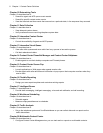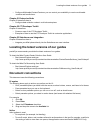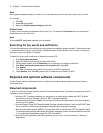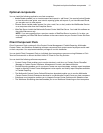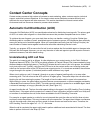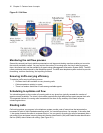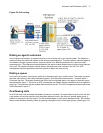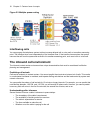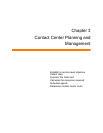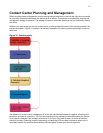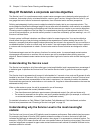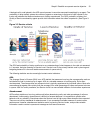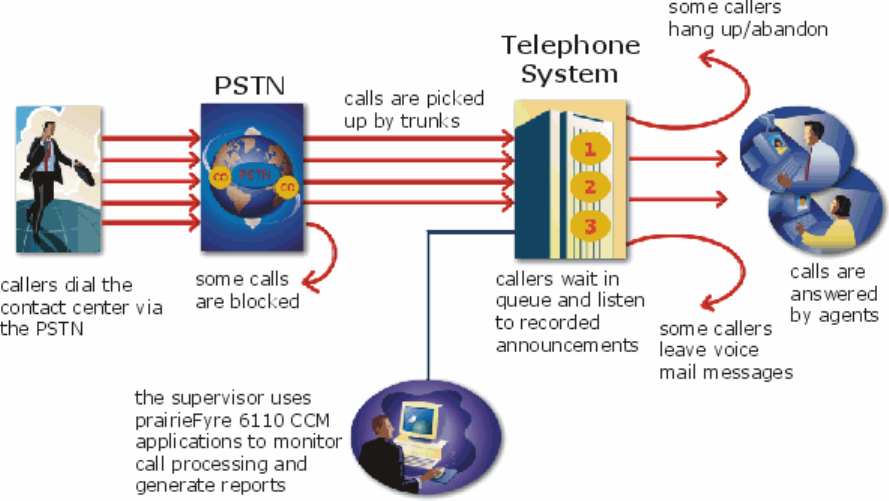
16 Chapter 2 Contact Center Concepts
Figure 2-1 Call flow
Monitoring the call flow process
Second-by-second (real-time) statistics presented on wall signs and desktop monitors enable you to monitor
the service provided to callers. You can monitor the number of incoming calls, the time it takes to process
them, the queue load, and the availability of agents using a Management Information System (MIS). The MIS
refers processes data produced by the telephone system. The MIS uses telephone system records to provide
forecasting, real-time monitoring, and reporting functions.
Ensuring traffic-carrying efficiency
To optimize traffic-carrying efficiency ensure
• Sufficient trunks are available to carry incoming calls.
• Callers experience a delay in queue.
• There is a random distribution of calls among available agents.
Scheduling to optimize call flow
You schedule agents so the number of incoming calls at any given time typically exceeds the number of
agents currently available. The intent is that callers experience a slight delay before agents answer their calls.
The expected number of incoming calls forecasted for the time of day, and day of the week influence
scheduling decisions.
Routing calls
Call routing options you program in the telephone system provide a set of instructions that automate the
movement of calls to their intended answering points. You can define options—for example, if the caller dials
1, the system forwards the caller to customer service. You can specify re-routing for calls not answered after a
set period of time and parse incoming Automatic Number Identification (ANI) and Dialed Number Identification
Service (DNIS) data to direct call routing. (See Figure 2-2.)



